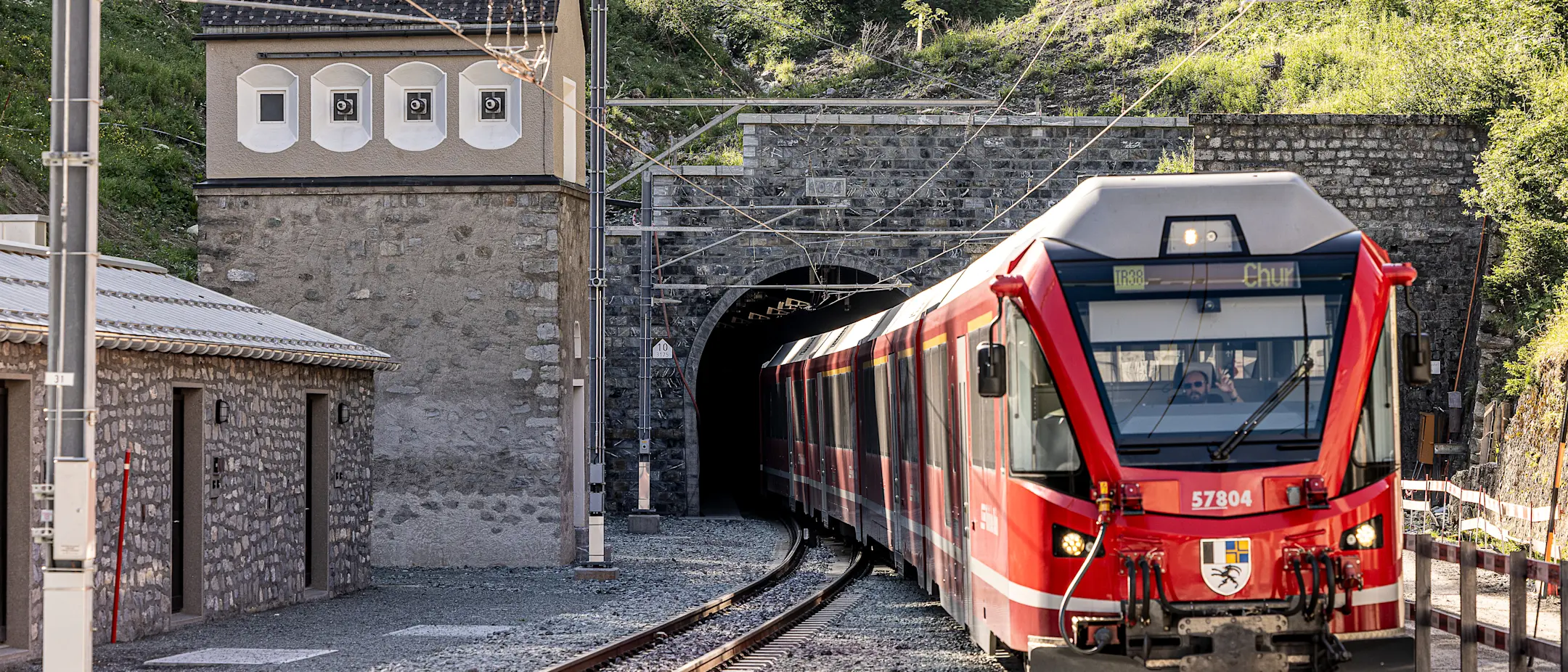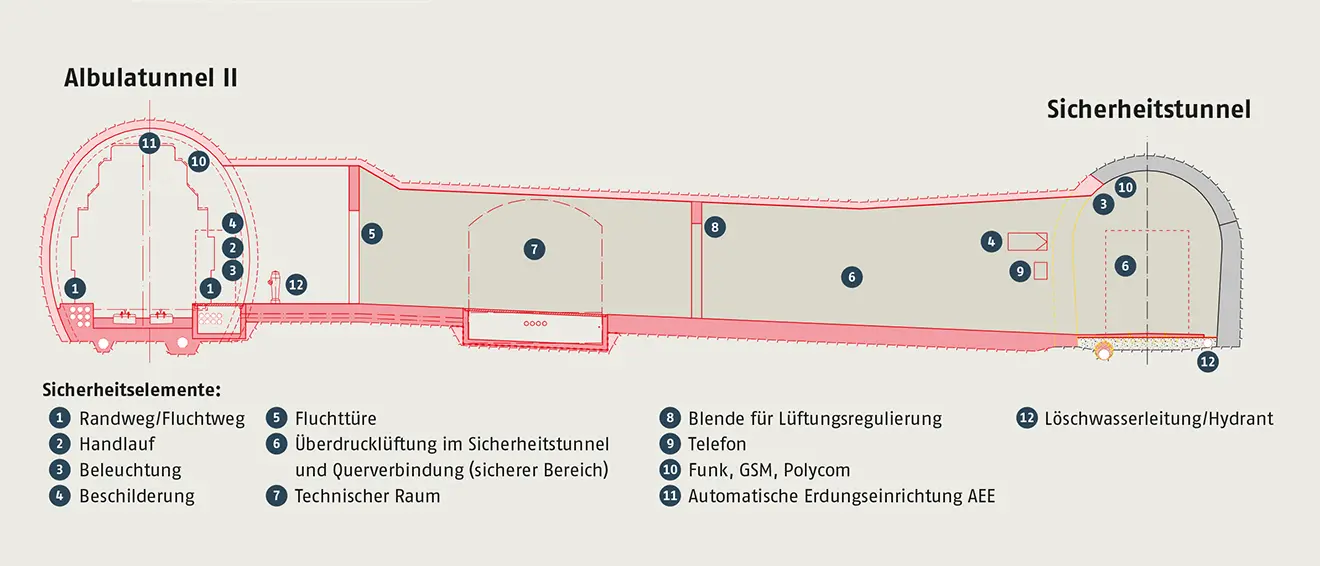Rhaetian Railway has had two tunnels through the Albula massif since 2024: the historic Albula Tunnel I and the newly built Albula Tunnel II. Together, they form a modern, safe and sustainable tunnel system that meets operational and safety requirements. As a link between North and South and part of the UNESCO World Heritage route, the Albula Tunnel is a lifeline for RhB.

A pioneering achievement
The first Albula Tunnel
A masterpiece of engineering was created between 1898 and 1903 with the first Albula Tunnel. The 5,864-metre-long tunnel at around 1,800 metres above sea level was the highest railway tunnel in the Alps. In just five years, it was driven through the mountain with impressive precision. More than 1,300 workers were involved in the construction, 16 of whom lost their lives in the process.
particular challenge was drilling through a 100-metre-long section of the Rauwacke fault zone. A massive influx of water meant that the tracks and tunnel floor were covered with the finest dolomite sand over a length of more than 500 metres. The machine drilling came to a standstill and the construction company commissioned had to give up. Under the leadership of RhB, it took around a year to overcome this fault zone.
The structure, which cost 7.3 million francs, was ceremonially opened on 1 July 1903. The Albula Tunnel has been a UNESCO World Heritage Site since 2008.
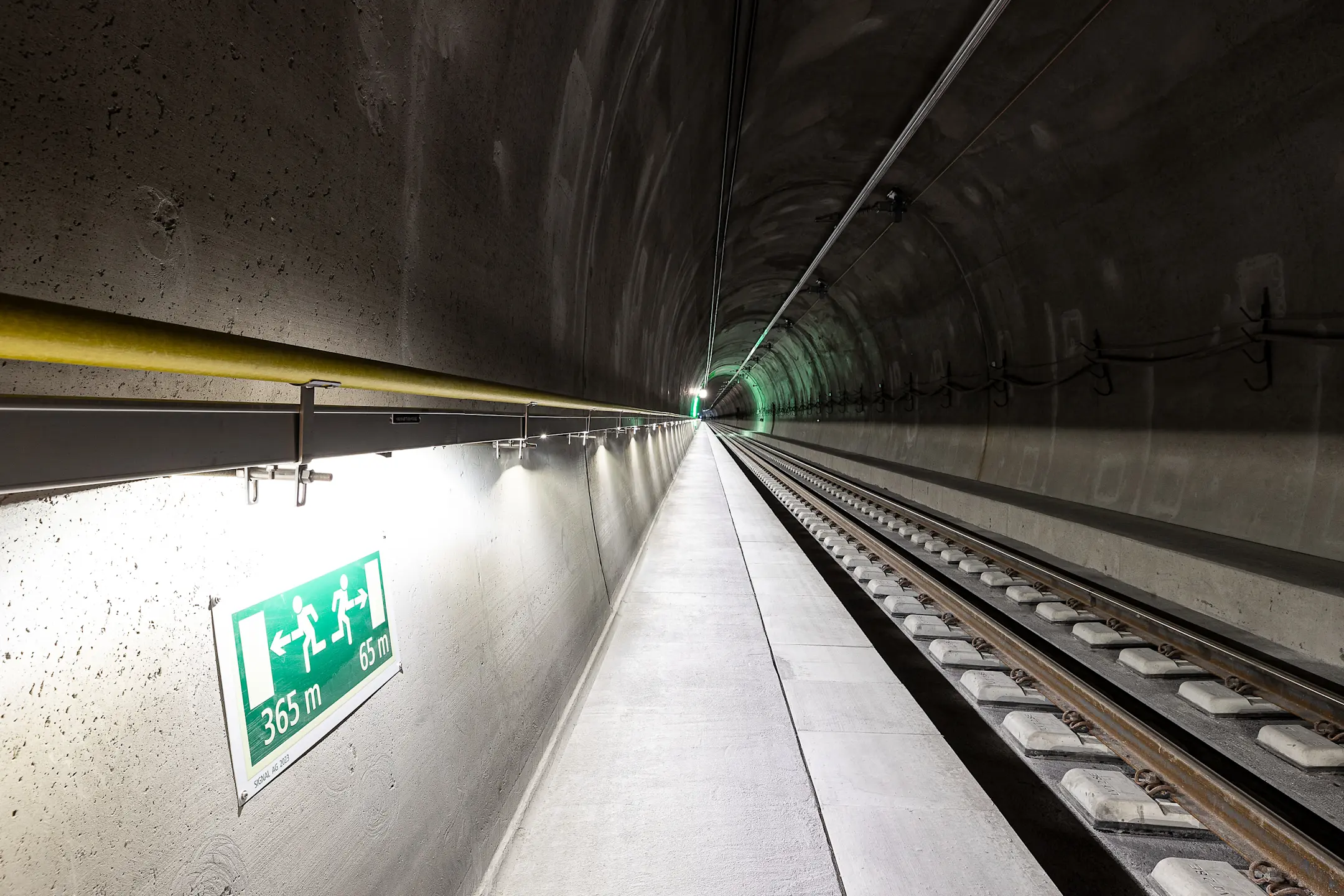
Sustainable decision
A second RhB tunnel
In 2006, an analysis of the condition of the Albula Tunnel revealed significant structural and safety deficits. More than half of the tunnel was in urgent need of refurbishment. After thoroughly examining all options, RhB decided in 2010 to build a new tunnel. The decisive factors were only slightly higher costs compared to the refurbishment, the possibility to largely maintain railway operations during the construction phase and the significant improvement in safety.
The historical structure of the existing tunnel has been preserved and is now used as a safety tunnel. The result is a modern and future-proof tunnel system with a total of 12 cross-passages. In an emergency, short escape routes and overpressure ventilation ensure rapid and safe evacuation.
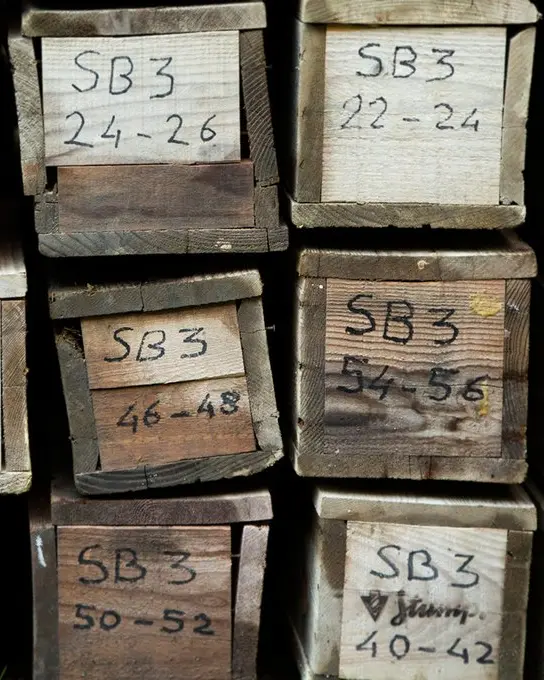
Committed to world heritage
Environmentally conscious and sustainable
The Albula Tunnel is located on the Chur – Thusis – St. Moritz route and has been part of the UNESCO World Heritage Site since 2008. When planning the new tunnel, Rhaetian Railway worked closely with the cantonal and federal historic monuments and environmental authorities. All adaptations to the terrain and facilities were carefully coordinated.
The remote construction site was largely accessible by rail. To this end, separate construction stations were built for both tunnel portals. During the construction phase, larger areas were temporarily used. The excavated material was processed in Preda as a raw material for concrete and gravel. Lower-quality material was deposited and renatured in a suitable terrain chamber in the “Las Piazzettas” area near Preda.
A comprehensive environmental impact report accompanied the project. It documented the impact of the construction and operating phases on nature and the environment, and defined measures to protect people, animals, the landscape, air and water.
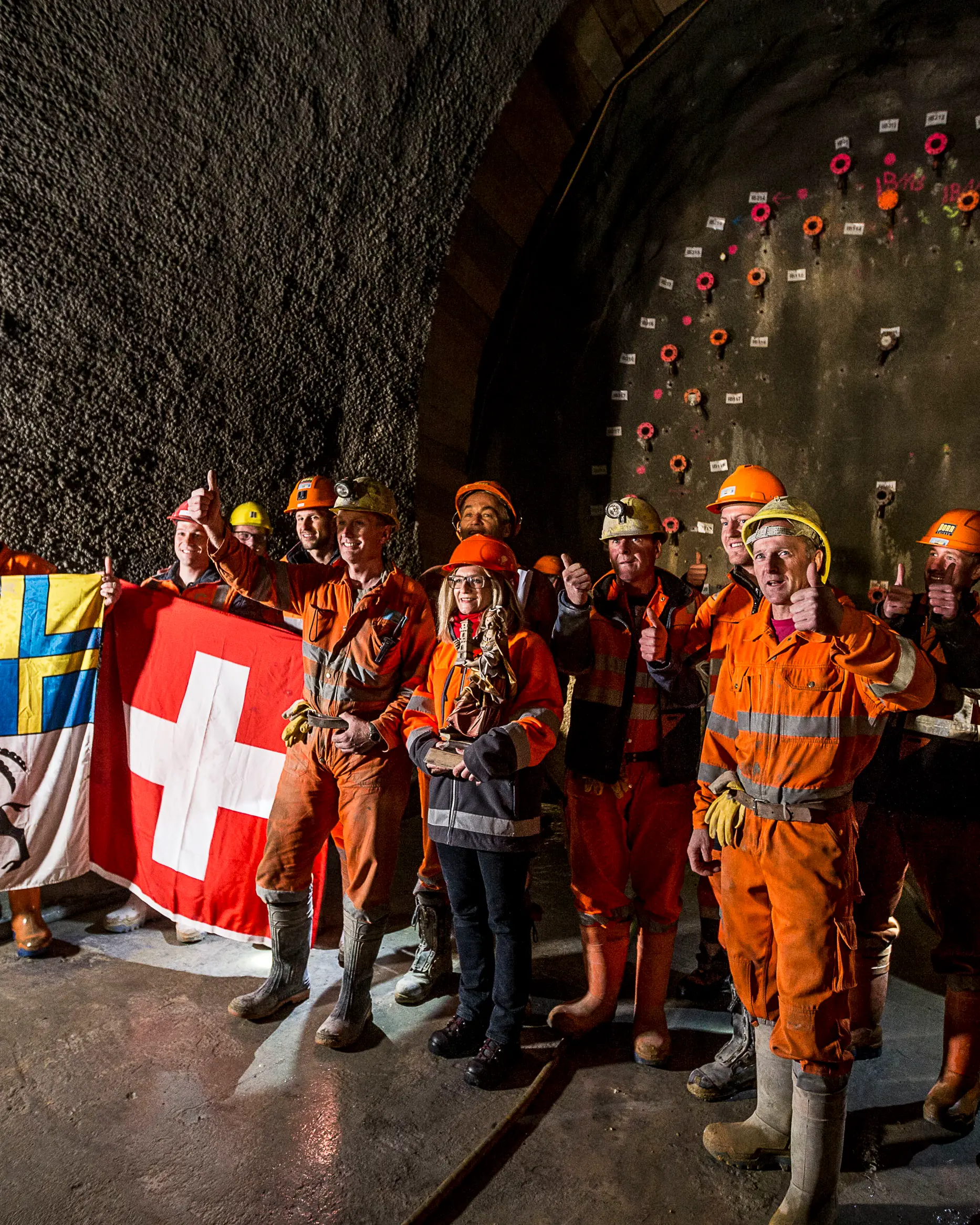
The new tunnel
Another project of the century
The construction of the new Albula Tunnel was a major project that took 14 years from planning to completion. The actual construction took place between the ground-breaking ceremony in June 2014 and the ceremonial opening in June 2024.
Following the planning phase, drilling and blasting took place from 2015 until the breakthrough in October 2018. After completion of the shell in 2022, the track and overhead contact lines were installed as were the railway technology and safety equipment. The first scheduled trains passed through the new tunnel at the end of 2024.
Despite geological challenges such as the Raibler Rauwacke fault zone, the project was successfully implemented thanks to precise planning and the great commitment of everyone involved. Parallel to the new construction, 12 cross-passages were created to the existing tunnel, which will serve as a safety tunnel in the future. The complete conversion into a safety tunnel will take until 2026.
The new Albula Tunnel is 5.86 kilometres long and designed for speeds of up to 120 km/h. The construction costs of CHF 407 million were borne in full by the federal government. Every year, around 1.5 million passengers use the route, with over 15,000 trains running over it.
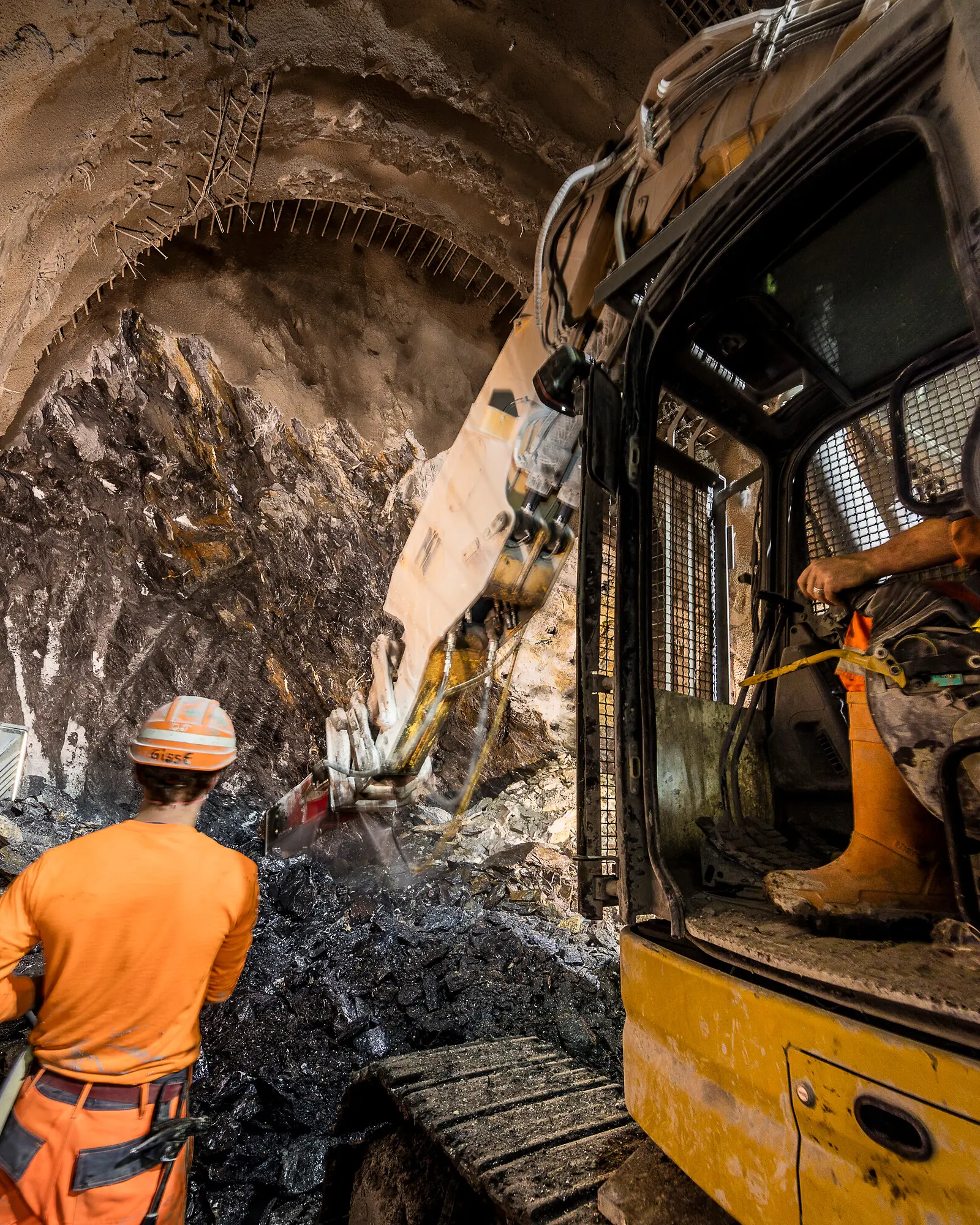
The big challenge
Raibler Rauwacke fault zone
The construction of the new Albula Tunnel was geologically challenging. The penetration of the fault zone Raibler Rauwacke was particularly testing. This geologically unstable layer required a complex special process, as detailed below.
The freezing of the fault zone: Over a period of nine months, the roughly 20-metre-thick Rauwacke was artificially frozen to -15 degrees Celsius over a length of 60 metres.
Construction of a cavern: The freezing was carried out from here and the tunnel excavation continued under the protection of an ice shield.
Stabilisation: After the breakthrough, the tunnel wall was secured with a 1.20-metre-thick concrete ring, including multi-layer, water-pressure-maintaining arch waterproofing.
The breakthrough into the cavern took place on 17 October 2017 from the Preda side. This was a significant milestone as it successfully broke through the most delicate zone.
Key figures
Facts and figures
Planning and completion
14 years (2011 - 2024)
Construction time
10 years
Length of Albula Tunnel || (new construction)
5,860 m
Length of Albula Tunnel | (existing tunnel)
5,864 m
Cross-passages to the safety tunnel
12
Height of tunnel from top edge of rail (opening)
5.44 m (9.52 m)
Inner width of tunnel from top edge of rail (opening)
5.76 m (7.67 m)
Excavated cross-section maximum
58.39 m²
Free tunnel cross-sectional area
26.88 m²
Apex height
1,821 m above sea level
Possible top speed in the tunnel
120 km / h
Total project costs
CHF 407 million
Financing
Confederation 100%
Cubic volume / excavated volume
244,000 m3
Trains per year
15,215
Frequency of people per year
1.5 million
